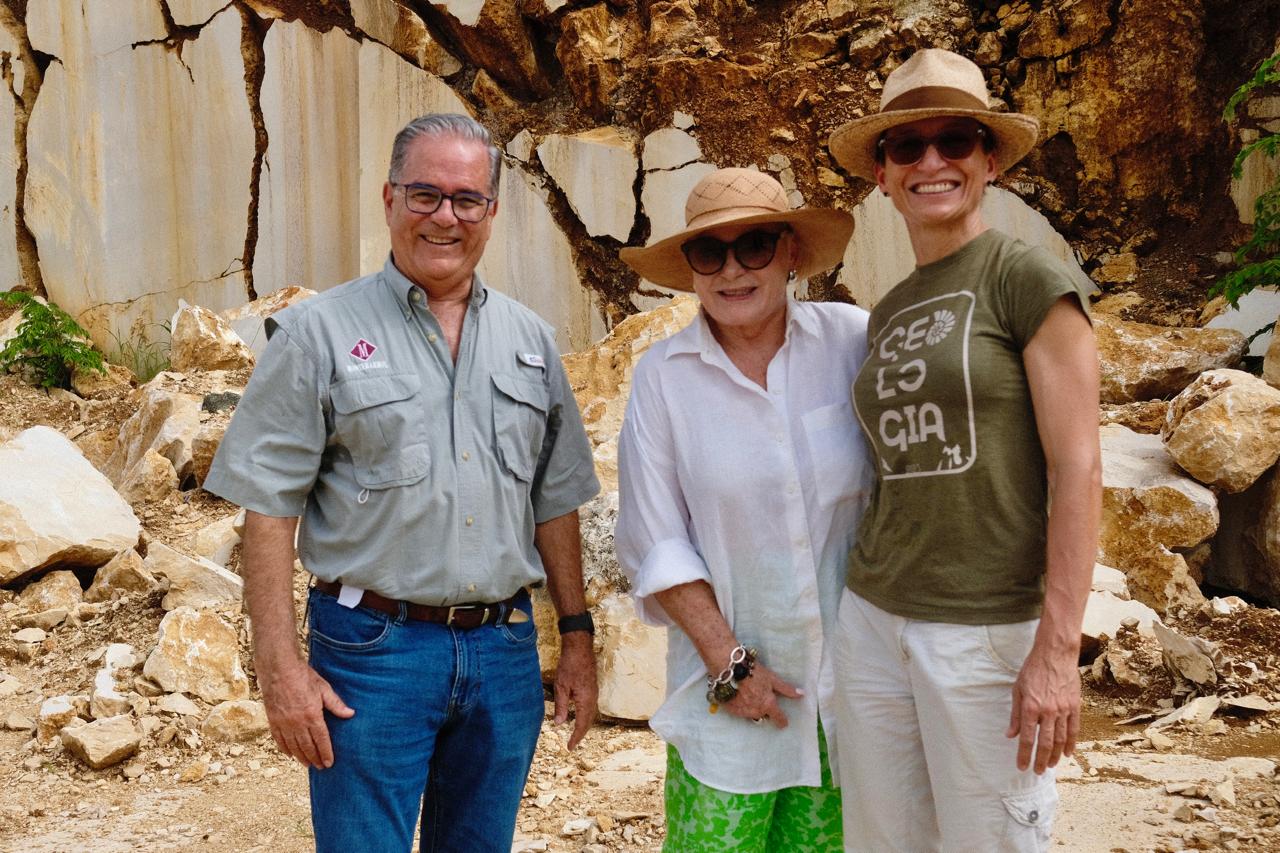We went up in a 4×4 to the top of Panama Hill near Nicoya. The ride was not long, but it was rocky and slippery. On the road there was one of those clays that stick relentlessly to the soles of your shoes and gradually loosen, leaving trails all over the house. The rocks we were about to discover had been deposited millions of years ago on that annoying mud, which previously did not bother anyone because it lay under the sea.
We were about 50 meters above sea level, on the right bank of the Tempisque River, just above the port where the ferry used to arrive before the La Amistad bridge existed. From there, mangroves opened on both sides of the river. In the distance, there were a couple of clear patches: limestone quarries like the one where were visiting.
The midday sun was shining from the eyes of José Manuel and his wife, Marcela, despite having visited that place hundreds of times. Jurgen and I were there thanks to the kindness of José Manuel, who contacted me by mail to invite me to visit his quarry, after reading one of my articles in this space of “Letra Libre”.
The quarry
We walked the pit together. I felt privileged to have the opportunity to discover an industrial ornamental limestone quarry. They do not use dynamite. That would damage the rock, which they are trying to extract with the least possible impact, to make slabs, floors, and veneer. Instead, they use a large saw, about three meters long, which allows them to remove blocks of stone that are then cut with a diamond wire.
At the foot of the vertical cuts left by the saw, smooth, and imposing, as if they were the walls of a building that was built without anyone proposing it, there were blocks of all sizes. I thought of César Manrique, the artist who built his house inside a lava flow made stone in Lanzarote. Today, that house in the stone is a museum that bears his name.
In some areas the rock was crystalline, shiny, and very compact as if it were marble. For this reason, probably, this rock was known for many years as Mármol Tempisque.
In other areas, there were miniature versions of the Barra Honda caverns, which are located about 15 kilometers inside the same formation. There was not one spot or section that was the same as the other. We saw no fossils, even though these rocks come from ancient reefs formed some 50 million years ago, in a Costa Rica that was mostly underwater.
Ornamental rocks
After a couple of hours, we said goodbye to our new friends. We decided to go to Cañas to drink a “leche dormida” at the soda don Rogelio, while the town was napping under the afternoon downpour. The mud from our boots left its first trace on the spotless white floor, which, according to the waitresses, had been cleaned for the last time, or almost, before closing.
The next morning, we returned to San José. We had lunch at the café at the National Theater. This time we left our boots in the car and walked in flip-flops through the city, despite the rain. We arrived on the south side, where we were greeted by the gray lava that adorns the wall of the theater. In front of the façade, we looked up to appreciate the yellowish sandstones of Coris, which are also used to sharpen knives.
Our ancestors dressed the National Theater with local rocks. That taste for our ornamental rocks was shared by those who built the churches of Palmares and Santa Ana with ignimbrites: volcanic rocks violently expelled by the Barva some 300,000 years ago.
Sitting in the coffee shop, we reviewed the photos of the trip. One showed the giant stone saw. Others showed me with rocks and the rocks with me. In another, there was José Manuel, Marcela and me, smiling, with the limestone cut behind us. I thought that image should accompany this article.
The polished stone in the background of the photo is unrepeatable and is the product of very special geological conditions that occurred over millions of years. Its value lies in its uniqueness: that characteristic that distances it from the mass production that dominates the consumer world in which we live.
The image captured in the quarry on Panama Hill now reveals to me a place to which, in some way, I belong. Perhaps that is what happens every time we raise, almost without realizing it, the walls of that spontaneous building we call friendship.

